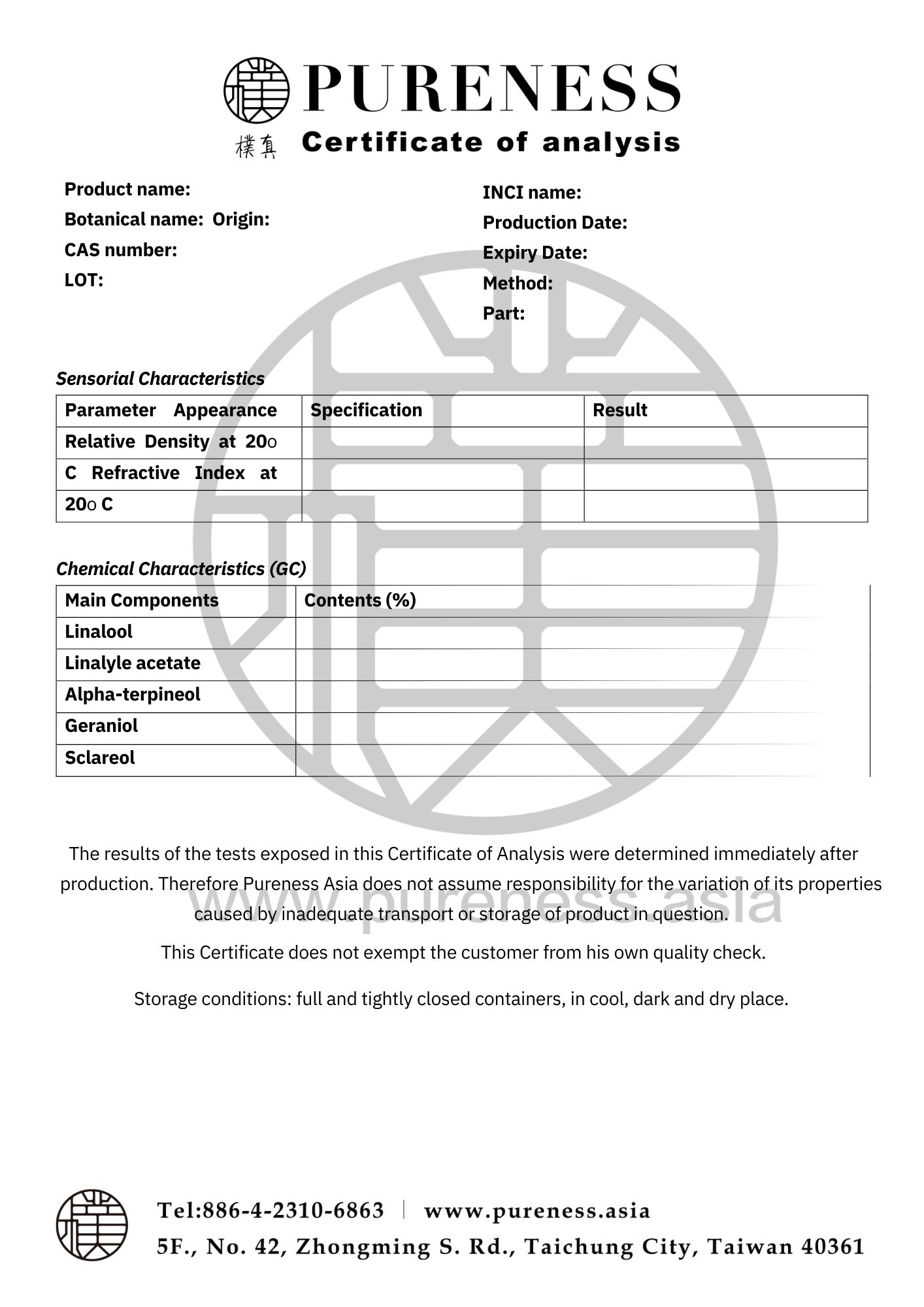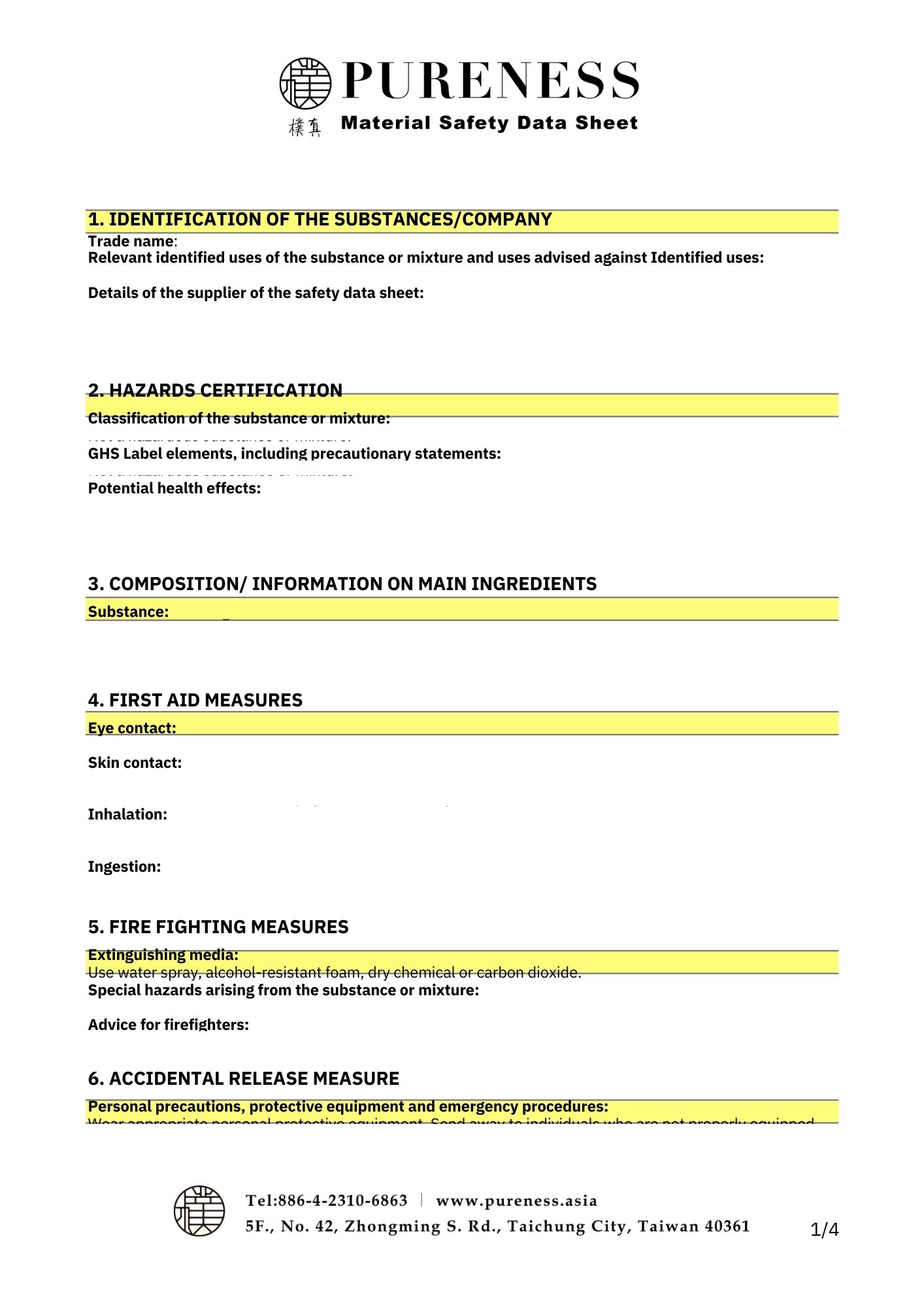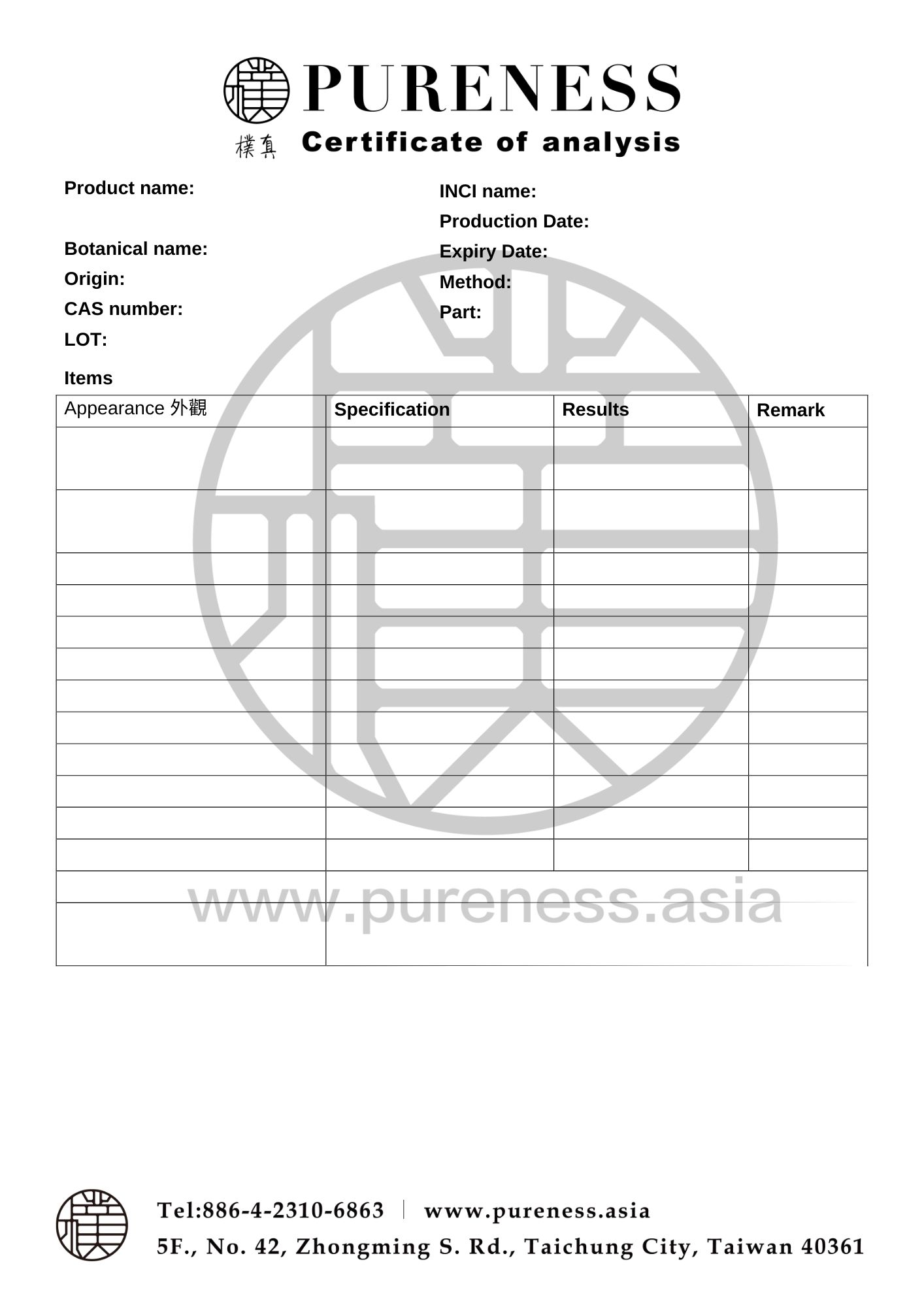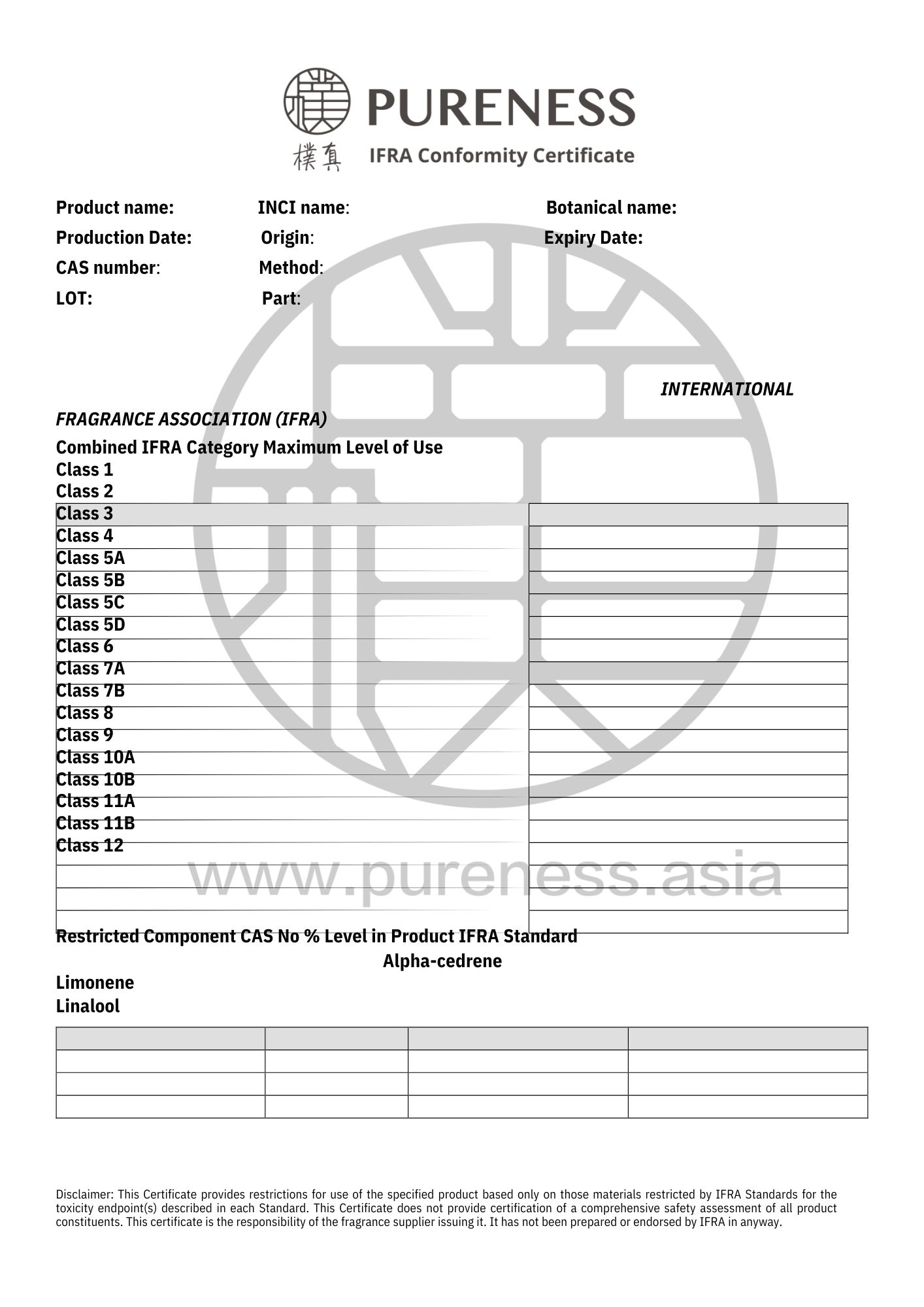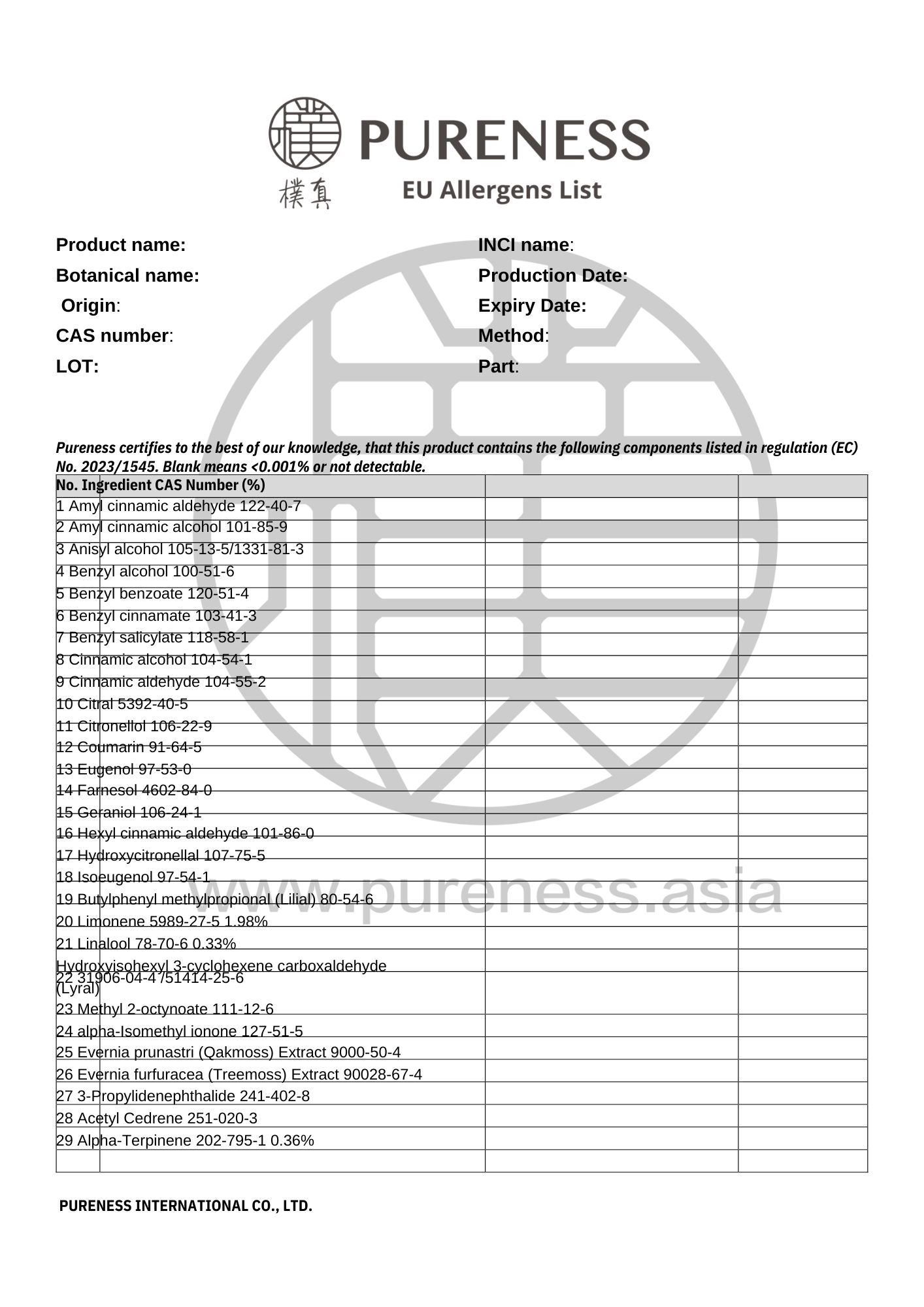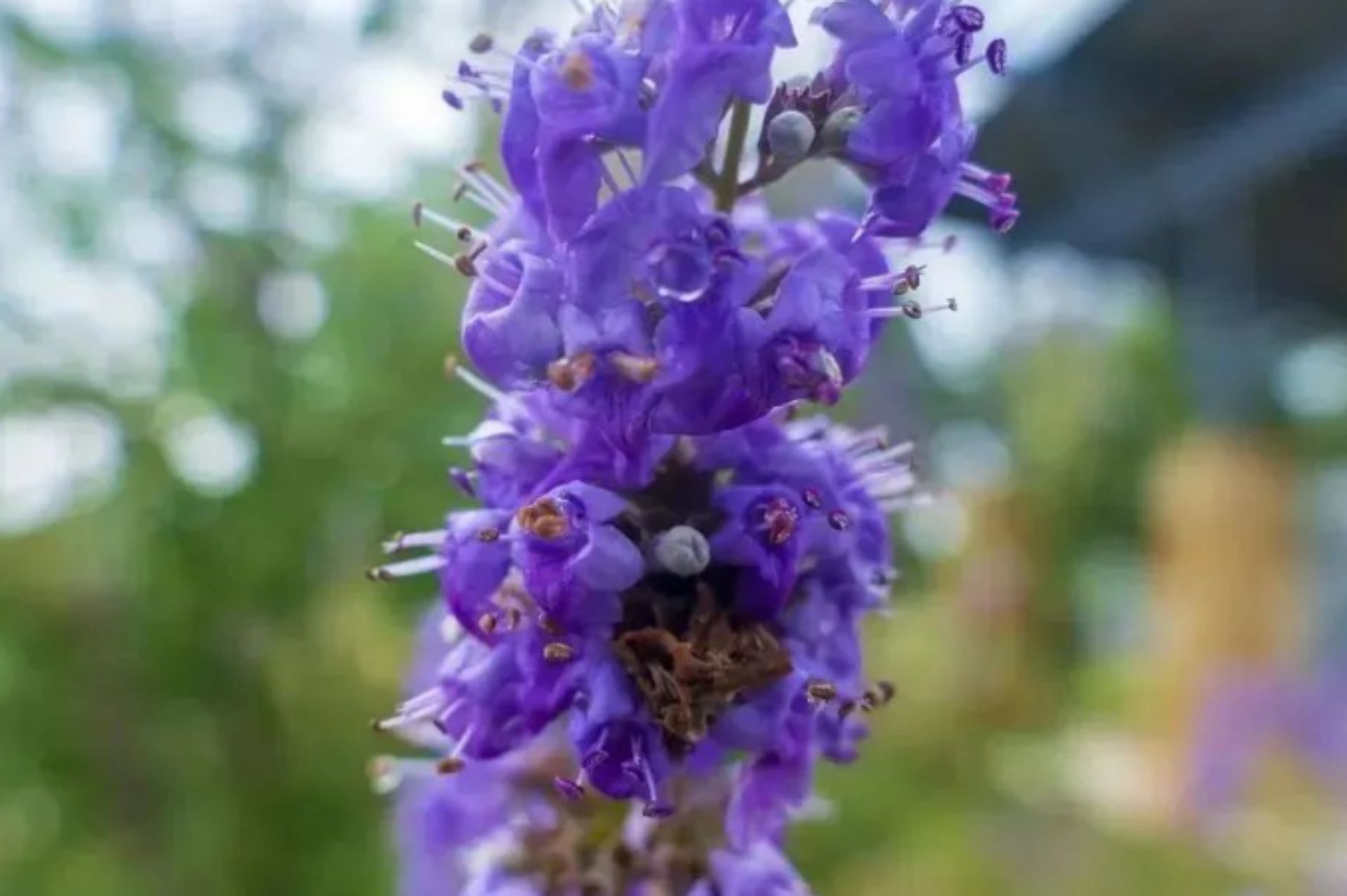
Vitex
Scientific name|Vitex agnus - castus
Origin|Hungary
Classification|Fruit series
Specifications|500g-25kg Please contact sales for details
Extraction part|Fruit
Extraction method | Distillation
Plant family|Verbenaceae
Aroma|Unique aroma, characterized by a strong herbal scent
▎Essential Oil Introduction
Vitex is native to the Mediterranean region and Western Asia. It is now cultivated in subtropical regions around the world. The plant is sown in spring or autumn and harvested in the fall. It grows to about 3.5-4 meters high and has a fragrant, dense, deciduous shrub appearance. The leaves are paper-like with feathered edges, and the plant produces dense, light purple to reddish-purple conical clusters of flowers, with oval-shaped fruit.
The scientific name, agnus and castus, refers to purity or chastity. Commonly known as "holy tree" or "monk's pepper," it has no peppery flavor despite the name. Both the essential oil and hydrosol have a herbal aroma with a slightly camphor-like, cool bitterness and spiciness. Used as a traditional herb for at least 2000 years, Vitex has been employed in gynecological treatments. It is a member of the Verbenaceae family, related to common vervain and lemon verbena. In ancient Greece, women whose husbands were away at war would consume Vitex fruit or sleep on beds filled with Vitex leaves to demonstrate their chastity.
▎Component Analysis
|Main component: Monoterpenes
The components are β-Caryophyllene, β-Selinene, α-Pinene, Cedrene, Eucalyptol, and 1.8-cineole, with variations in their proportions depending on the origin.
|Research Validation

▸ Studies have shown that Vitex extract is related to alleviating symptoms of premenstrual syndrome (PMS) and premenstrual mood disorders.

▸ Research has indicated that Vitex fruit may be beneficial for managing cyclic breast pain.
|Raw Material Certifications
To obtain relevant certification information, please contact us on WhatsApp.
▎References
- Heirati SFD, et al. The 4-month effect of Vitex agnus-castus plant on sexual function of women of reproductive age: A clinical trial. J Educ Health Promot. 2021. Aug 31;10:294.
- Ooi SL, et al. Vitex Agnus-Castus for the Treatment of Cyclic Mastalgia: A Systematic Review and Meta-Analysis. J Womens Health (Larchmt). 2020. Feb;29(2):262-278.
- Mollazadeh S, et al. The effects of Vitex agnus-castus on menstrual bleeding: A systematic review and meta-analysis. J Complement Integr Med. 2019. Jul 31;17(1):/j/jcim.2019.
- Csupor D, et al. Vitex agnus-castus in premenstrual syndrome: A meta-analysis of double-blind randomised controlled trials. Complement Ther Med. 2019. Dec;47:102190.
- Rafieian-Kopaei M, et al. Systematic Review of Premenstrual, Postmenstrual and Infertility Disorders of Vitex Agnus Castus. Electron Physician. 2017. Jan 25;9(1):3685-3689.
- Cerqueira RO, et al. Vitex agnus castus for premenstrual syndrome and premenstrual dysphoric disorder: a systematic review. Arch Womens Ment Health. 2017. Dec;20(6):713-719.
- Verkaik S, et al. The treatment of premenstrual syndrome with preparations of Vitex agnus castus: a systematic review and meta-analysis. Am J Obstet Gynecol. 2017. Aug;217(2):150-166.
- Eryigit, T., Çig, A., Okut, N., Yildirim, B., & Ekici, K. Evaluation of chemical composition and antimicrobial activity of Vitex agnus castus L. fruits' essential oils from west Anatolia, Turkey. Journal of Essential Oil Bearing Plants, 2015.18(1), 208-214.
- van Die MD, et al. Vitex agnus-castus extracts for female reproductive disorders: a systematic review of clinical trials. Planta Med. 2013. May;79(7):562-75.
- Zamani M, et al. Therapeutic effect of Vitex agnus castus in patients with premenstrual syndrome. Acta Med Iran. 2012. ;50(2):101-6.
|Some images sourced from the internet. Contact for copyright removal|
